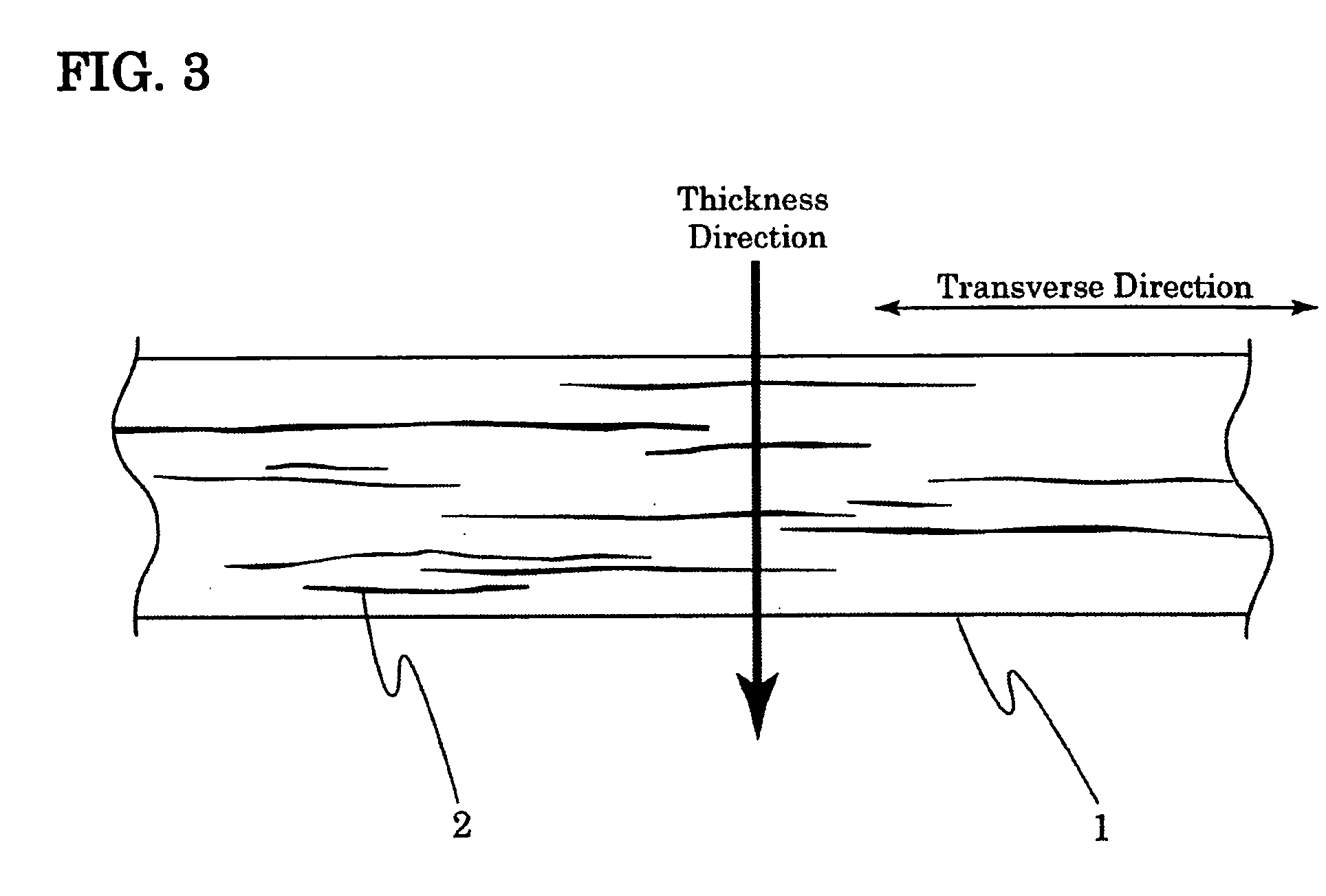Fuel barrier single-layered structure and multi-layered shaped article
a single-layer structure and fuel barrier technology, applied in the direction of synthetic resin layered products, transportation and packaging, chemistry apparatus and processes, etc., can solve the problems of fuel container permeation not meeting the recent fuel permeation regulation, fuel barrier properties are unsatisfactory, and fluorine treatment is now scarcely used, so as to prevent the solidification increase the temperature of the reaction system, and high quality
- Summary
- Abstract
- Description
- Claims
- Application Information
AI Technical Summary
Benefits of technology
Problems solved by technology
Method used
Image
Examples
example 1
[0064] Into a jacketed 50-L reaction vessel equipped with a stirrer, a partial condenser, a cooler, a dropping tank and a nitrogen inlet, were charged 7 kg (47.89 mol) of adipic acid and 3.4 kg (20.53 mol) of isophthalic acid. The inner atmosphere was fully replaced with nitrogen, and the contents were made into a uniform slurry of isophthalic acid and molten adipic acid at 160° C. in a small stream of nitrogen. To the slurry, was added dropwise 9.2 kg (67.29 mol) of m-xylylenediamine over 170 min under stirring. During the addition, the inner temperature was continuously raised to 247° C. The water which was produced as the addition of m-xylylenediamine proceeded was removed from the reaction system through the partial condenser and the cooler. After completion of adding m-xylylenediamine, the inner temperature was raised to 260° C. and the reaction was continued for one hour. The resultant polymer was taken out of the reaction vessel in the form of strand through a lower nozzle, w...
example 2
[0066] In the same manner as in Example 1 except for using 11.9 kg (81.65 mol) of adipic acid and adding dropwise 13.7 kg (100.739 mol) of m-xylylenediamine over 160 min under stirring, Polyamide 2 was produced. The results of evaluation of the properties of Polyamide 2 are shown in Table 1.
[0067] Polyamide 2 was blended with Polyolefin 1 and the modified polyethylene in respective blending ratios as shown in Table 2, and then extruded at 210° C. to a thermoplastic resin composition. The results of measurements are shown in Table 2.
example 3
[0068] A dry blend of 97 parts by weight of the Polyamide 1 and 3 parts by weight of montmorillonite (“Orben” tradename of Shiraishi Kogyo Co., Ltd.) was fed at a rate of 12 kg / h from a metering feeder into a twin-screw extruder of a cylinder diameter of 37 mm equipped with a strong knead screw having a dwelling zone formed by a reverse flighted element. The blend was melt-kneaded under conditions of a cylinder temperature of 200° C., a screw rotation speed of 500 rpm and a dwelling time of 75 s. The molten strand from the extruder was cooled by cooling air, solidified and then pelletized to obtain Resin Composition 1. The results of evaluation of the properties of Resin Composition 1 are shown in Table 1.
[0069] In the same manner as in Example 1 except for using Resin Composition 1 in place of Polyamide 1, a thermoplastic resin composition was prepared. The results are shown in Table 2.
PUM
| Property | Measurement | Unit |
|---|---|---|
| melting point | aaaaa | aaaaa |
| melt viscosity | aaaaa | aaaaa |
| melt flow rate | aaaaa | aaaaa |
Abstract
Description
Claims
Application Information
 Login to View More
Login to View More - R&D
- Intellectual Property
- Life Sciences
- Materials
- Tech Scout
- Unparalleled Data Quality
- Higher Quality Content
- 60% Fewer Hallucinations
Browse by: Latest US Patents, China's latest patents, Technical Efficacy Thesaurus, Application Domain, Technology Topic, Popular Technical Reports.
© 2025 PatSnap. All rights reserved.Legal|Privacy policy|Modern Slavery Act Transparency Statement|Sitemap|About US| Contact US: help@patsnap.com


